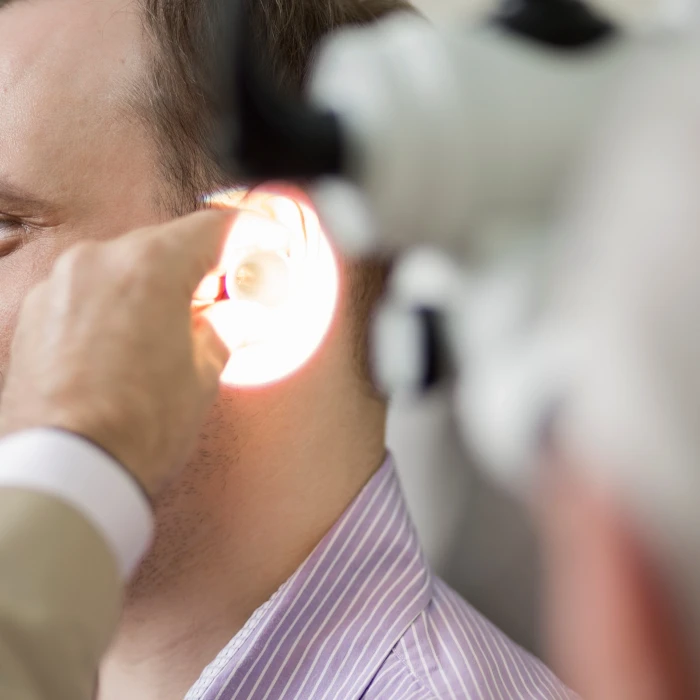This leads to a build-up of sticky, mucous fluid that obstructs the normal workings of the eardrum and the auditory ossicles. The most common symptoms are hearing loss and, as a result, issues with speech. The condition can also lead to behavioral problems, discomfort in the ear, blockages, clicking sounds and in some cases problems with balance. It most commonly occurs at two different ages: around two and five years old. Up to 40% and 20% of the children in the respective age groups can be affected. Potential risk factors for this condition include upper respiratory infections, attending playgroup/kindergarten, passive smoking, atopy, early-onset acute middle ear infections and certain physiological and anatomical irregularities.
If you suspect your child may be suffering from glue ear, you should see an ENT (ear, nose and throat) specialist. If you child does have otitis media with effusion, or glue ear, in most cases the secretion that has built up behind the eardrum will disappear by itself within three months. If it does not, the insertion of a grommet to allow the air to circulate may be an effective treatment option.
What do you need to know about grommet insertion?
A grommet is a small plastic tube that is inserted into the eardrum to help air pass through.
The procedure is carried out via the auditory cavity, which means there is no visible mark. With the help of an operating microscope, a tiny incision is made on the eardrum. Then, after removing the build-up of fluid in the middle ear, the tube is inserted into the opening.
In most cases, the patient is briefly put to sleep while the procedure is carried out. After the operation, we wait until the child is fully conscious. If they feel okay and are able to eat and drink something, there is no reason why they cannot go home. Usually, the patient returns for an ENT and audiology check-up six weeks after the operation.
Our related doctors
Any questions before booking an appointment?
If you are unsure which doctor to see or what examination you require, we are here to help!
Simply request a free callback from one of our colleagues, who will help you find the right specialist based on your specific issue.




